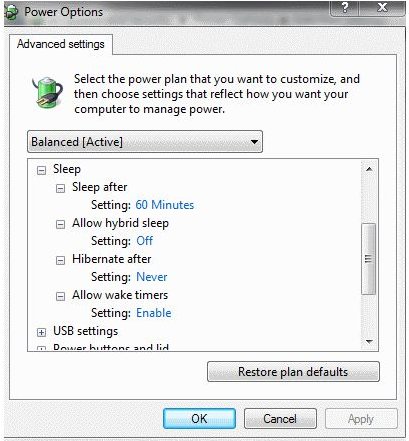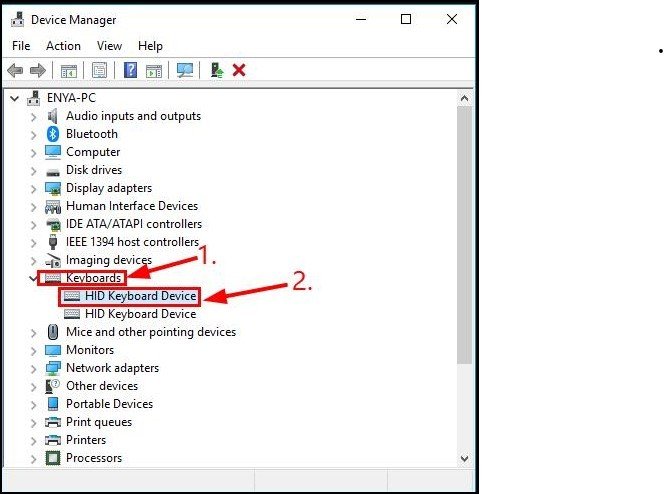
- #Window 7 hibernated wake up time how to
- #Window 7 hibernated wake up time drivers
- #Window 7 hibernated wake up time upgrade
- #Window 7 hibernated wake up time windows 10
- #Window 7 hibernated wake up time pro
#Window 7 hibernated wake up time pro
I had a similar issue on my Dell Inspiron 5584 / Win 10 Pro laptop where my computer would wake exactly 180 minutes after it went into Sleep mode.
#Window 7 hibernated wake up time upgrade
If that is correct and your upgrade to Win 10 hasn’t fixed this problem have you tried Mele20’s suggestion in post # 2430089 and looked through the Advanced settings of your current power plan (Control Panel | System and Security | Power Options | Change Plan Settings (for your current power plan) | Change Advanced Power Settings | Sleep) to check your Sleep and Hibernate settings? Regarding your older Win 7 thread Custom Windows 7 PC Won’t Shutdown, it sounds from your description that your computer would wake spontaneously after it went into Sleep or Hibernation mode.
#Window 7 hibernated wake up time how to
Regarding Fast Startup, do you see a link that says “ Change settings that are currently unavailable” near the top of the page at Control Panel | System and Security | Power Options | Change What the Power Buttons Do that you can click to configure additional or greyed-out options? See Option 1 / Step 3 of the TenForums tutorial How to Turn On or Off Fast Startup in Windows 10.
#Window 7 hibernated wake up time windows 10
Some Info about my 2014 Custom Built Desktop: – upgraded to Windows 10 Pro (圆4) Intel i7 – Motherboard brand and model: Gigabyte Ultra Durable Motherboard GA-X99-UD4 (manual edition date stamp August 2014) Here’s link to my past Topic when my Desktop was on Win7 Pro. I checked wake timers thru powercfg and there’s no wake timers. I tried to check again, but in Windows 10 Pro it/Wake to LAN Settings window looks to different for My Not Tech Savvy self to know what to check for under Power Management Tab of Intel Ethernet. With a lot if help, it was fixed by unchecking some Wake to LAN Settings inside my Intel Ethernet Properties under Network Adapter by before upgrading to Win 10 Pro. In same Desktop when it was on Win7 Pro(up until this Sept/Oct) it went thru periods of time when it either won’t stay shutdown or will take 4 times trying different methods before staying shutdown. Or could updating Windows to version 21H2 will add a new variable/make it harder to fix issue ? Then it was able to wake up & I shut down quickly in fear that it’ll start acting up again. But, when I clicked my mouse, Desktop PC tried 20 times in 20 seconds to fully wake up until after trying twice in holding down PC’s Power Button. It's worth noting, also, that the powercfg command is present in older versions of Windows, but the ability to generate an energy report is - as far as we're aware - new to Windows 7.ĭoes your system sleep as it should, or will you be trying to solve your system's insomnia with the Windows 7 energy report? Share your thoughts on sleep mode in the munity forums.Yesterday, a new/never had before Wake issue, which happened I left Desktop on for 3 hrs & it eventually went to Deep Sleep/PC only looks like its Off. We've tried it on Windows 7 RC, and we've found the report to be useful. The report (saved as a web page at C:\Windows\system32\energy-report.html) will also detail the system's supported sleep states - that's S1, S2, S3 or S4 - as well as highlight other potential energy-saving settings.
#Window 7 hibernated wake up time drivers
Windows 7 will then analyse the system and produce a report detailing devices and drivers that may be preventing sleep from functioning properly. This can be done by locating Command Prompt in the Start Menu (under All Programmes, Accessories) and launching it by right clicking and choosing "Run as administrator".Ģ) Once in Command Prompt as the administrator, type "powercfg -ENERGY" without the quotations, of course. Here's how to give it a go:ġ) Open Command Prompt as an administrator. With a multitude of possible causes, I gave up a while back, but the need to save power is ever-more apparent and there's a tool built into Microsoft's Windows 7 operating system to help diagnose sleep problems. Thinking back, I can't seem to recall ever building a PC that successfully slept when asked to do so - they've always had a tendency not to want to sleep at all, or a strong desire to wake up on their own accord. Trouble is, sleep mode doesn't always seem to work - particularly on custom-built PCs using varying components and drivers. Mighty useful, and a sleeping system can be woken up quickly - meaning an almost-instant return to the operating system.

If you're not too familiar with it on the desktop, you're likely to have seen sleep mode used on notebooks - as many are pre-configured to enter into sleep when the lid is closed to help preserve battery life. Put simply, it refers to a low-power state in which PCs can turn off non-essential components and help save power when a system isn't in use.

Sleep mode, or stand by as it's sometimes known, is a great idea - in theory.


 0 kommentar(er)
0 kommentar(er)
